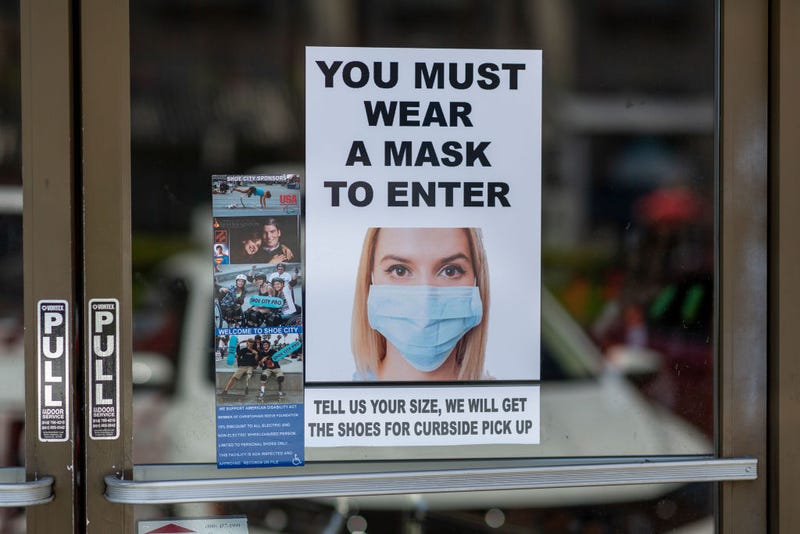
Don’t get rid of your masks just yet, Bay Area.
Although California will lift the vast majority of its coronavirus-related restrictions on Tuesday, the state’s workplace regulatory agency has yet to vote on a new proposal with updated standards for workers.
Cal/OSHA will discuss on Thursday a new plan that, among other items, would allow for vaccinated workers to no longer wear face coverings in most circumstances and eliminate physical distancing requirements in the absence of a significant outbreak.
Gov. Gavin Newsom said Monday in a press conference that he would issue an executive order that would eliminate the required 10-day waiting period before Cal/OSHA’s possible ruling would take effect.
Vaccinated workers will be able to shed their masks after Thursday once the order is signed.
In the meantime, local governments and businesses can still choose to implement stricter standards than the state.
"(Businesses) can choose to continue to implement rules and policies that they believe preserve the safety of their employees and their guests or clients," Krista Mitzel, an employment attorney and founder of The Mitzel Group told KCBS Radio’s Margie Shafer and Jim Taylor. "And so it's gonna be interesting to see the broad range of changes that we see.
"Some may eliminate the requirements completely, and others may keep them in place for a while until they feel more comfortable."
Cal/OSHA’s updated proposal is an about-face from one earlier this month. The regulatory agency’s seven-member standards board unanimously voted on June 3 to require all workers to continue wearing masks indoors if they shared a room with one colleague who wasn’t vaccinated against COVID-19.
Last week, the board voted to withdraw the proposal amid criticism it didn’t align with Gov. Gavin Newsom’s planned June 15 reopening and guidance from the U.S. Centers for Disease Control and Prevention.
Mitzel said the changes were "really frustrating for employers to know exactly how to handle it."
"There's employee safety, and customer and the (public’s) safety to think about, and then we layer on all of the different legal requirements," she said of Cal/OSHA’s process. "We layer on how people are feeling about it in public opinion, and then there's the political side of things, with the recall (election) going on. There's just a lot of different dynamics going on here, and how they're (making decisions)."
Just over 55% of Californians over the age of 12 are fully vaccinated, according to state data. Yet there are disparities across the state and even within regions.
For instance, although the Bay Area has some of the highest vaccination rates in the country, there are portions of Contra Costa, Santa Clara, Solano and Sonoma counties – just to name a few – that are vaccinated at a lower rate than the state as a whole.
As a result, Mitzel wouldn’t be surprised if businesses continue to have stricter rules in place following the state’s Tuesday reopening.
First and foremost, she recommended companies should continue to prioritize their workers’ safety.
"Think about your employees," Mitzel said. "How are your employees feeling? What's going to make them feel safe and taken care of, since there are a lot of folks out there that might not be vaccinated, and you want your staff that they're out there and they're protected because they're the ones doing the great things by feeding us and providing these essential services to us."

